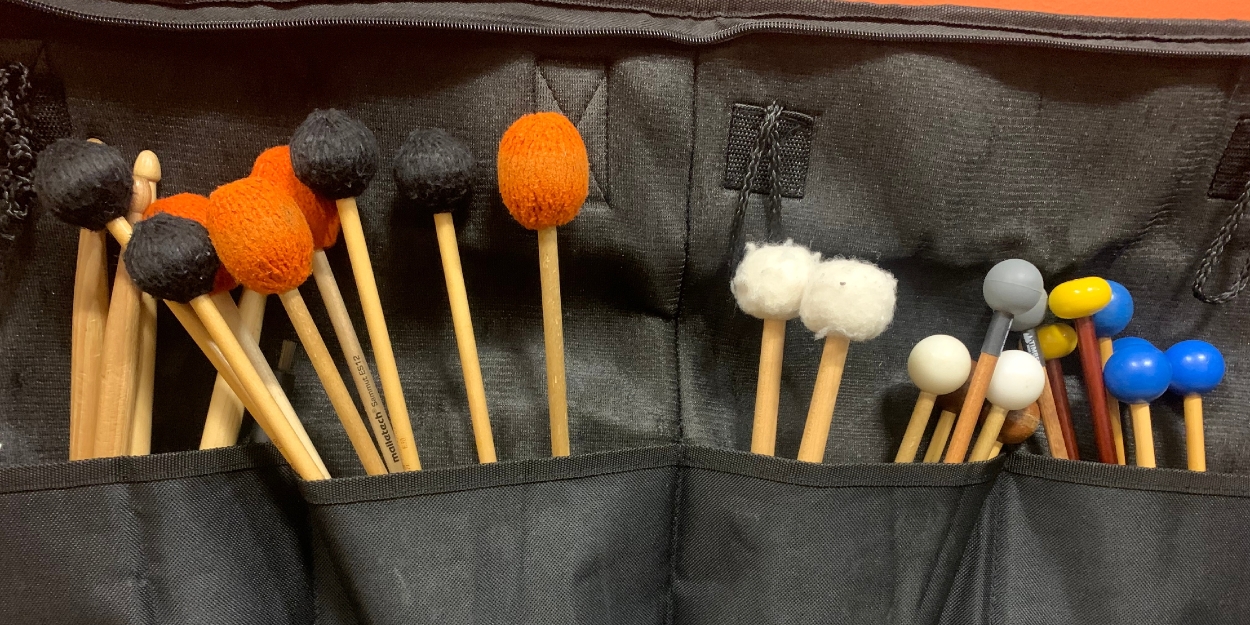Student Blog: Repertoire: How I Pick and Practice Pieces Each Semester
I believe that when a music student is allowed to pick their own repertoire throughout their studies, it makes for a fascinating glimpse into their personality.

Good morning!
I hope that throughout your music studies, you get plenty of opportunities to pick your own songs to perform, either for juries or recitals. It's a great way to show a part of your own personality to your professors and classmates. I would like to share my process for picking and practicing repertoire with each new semester.
I play marimba primarily, and like most music students, I'm learning piano as well. I'm not sure how well my process for practicing on the marimba will translate for those who play other instruments, but I hope you all can take something from my experience anyway!
There's one big thing that separates classical percussion from other instrumental studies: I don't have access to these instruments very often! Some instruments, like the flute and the trumpet, are portable, so there are more places where you can practice with those. In the percussion world there are huge instruments like the marimba and the timpani, which are more expensive, so players are not as likely to own them personally. As such, I have to schedule my practices around the availability of practice rooms at school.
I'll usually pick one main piece to learn in the semester. The rest of my repertoire is rounded out by what I'm learning for other groups, such as the school musical and wind ensemble. Something important to pay attention to when picking repertoire is the range that is needed for a given piece. The marimba I use at school has a 4.3 octave range (some have 5 octaves, some only have 4), so the pieces I learn need to be within that range. Most marimba pieces will tell you the required range before you buy them.
I've specifically sought out work by composers of marginalized groups throughout college: female composers, LGBTQ+ composers, and composers of color, for example. Being a disabled woman of color myself, I think composers and players of marginalized groups aren't amplified as much as we could be. These spaces are fortunately getting more diverse today, and hopefully we'll make more progress as time passes.
When I'm browsing for a piece I want to play, I usually don't prioritize finding music with techniques I need to improve on. Instead, when I've picked out a piece, I'll look at it and think, "What kind of technique is used here that is new to me? What will I improve on by learning this?" I'm currently learning Snapdragon by Sebastian Zhang, and what drew me to this piece was its fun, upbeat mood, and it's modern influences. In the notes, Zhang says they drew inspiration from video games, calling the piece "non-classical". Most of the pieces I've done in school until now have been very rubato, meaning without a strict tempo. Snapdragon poses a fun challenge for me because it has a very steady groove, which I hope I'll be able to play effectively.
I'll usually try to incorporate new exercises each semester as well. Last semester, my goal was to get comfortable with every harmonic minor scale. This semester, I want to familiarize myself more with the pentatonic scales, and then hopefully explore different modes. Sight reading is also a major part of my practice! I practice sight reading for marimba, piano, and singing. I especially want to get better at solfège this semester.
I have a journal that I write in before going into each practice session. I'll make note of how much time I have, and then divide that time between scales, exercises, and repertoire. After practice, I'll write down what specific areas I paid attention to, and what I need to work on improving next time.
I'll still do some work at home, even if I'm away from a marimba. There are exercises you can do on a pillow with mallets to ensure you're maintaining good technique. These exercises really help build your chops as well! I also have a little keyboard that I use to work out the notes to a piece, which makes things easier whenever I do have access to the real marimba at school.
You should always try to get feedback from others. When you're practicing repertoire, I assume that most of you will have a professor guiding you along the way. My best advice would be: listen to your mentor's suggestions, but don't feel like you have to incorporate everything they say into your performance. Never be afraid to say something like "can we try it this way instead?" Not all your ideas will stick in the end, but they are all worth trying out.
I wish you all good luck in your practicing this semester, and I hope that my advice inspires you to try something new this in your future studies!
Play Broadway Games
Videos






%20(1024%20×%20512%20px).png)